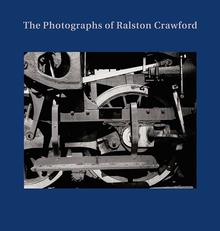How Photography Became Contemporary Art
WARNING
You are viewing an older version of the Yalebooks website. Please visit out new website with more updated information and a better user experience: https://www.yalebooks.com
Inside an Artistic Revolution from Pop to the Digital Age

Read this book online via the A&AePortal, our art and architectural history eBook platform. To learn more about how to access this book, please contact us.
A leading critic’s inside story of “the photo boom” during the crucial decades of the 1970s and 80s
“Grundberg . . . is a vibrant, opinionated, authoritative guide to the medium’s past and present.”—Jackie Wullschläger, Financial Times, "Best Books of 2021: Visual Arts"
When Andy Grundberg landed in New York in the early 1970s as a budding writer, photography was at the margins of the contemporary art world. By 1991, when he left his post as critic for the New York Times, photography was at the vital center of artistic debate. Grundberg writes eloquently and authoritatively about photography’s “boom years,” chronicling the medium’s increasing role within the most important art movements of the time, from Earth Art and Conceptual Art to performance and video. He also traces photography’s embrace by museums and galleries, as well as its politicization in the culture wars of the 80s and 90s.
Grundberg reflects on the landmark exhibitions that defined the moment and his encounters with the work of leading photographers—many of whom he knew personally—including Gordon Matta-Clark, Cindy Sherman, and Robert Mapplethorpe. He navigates crucial themes such as photography’s relationship to theory as well as feminism and artists of color. Part memoir and part history, this perspective by one of the period’s leading critics ultimately tells a larger story about the crucial decades of the 70s and 80s through the medium of photography.
Andy Grundberg was the photography critic of the New York Times from 1981 to 1991. He later served as the director of the Ansel Adams Center for Photography in San Francisco and as chair of the photography department and dean of the Corcoran College of Art and Design.
"Grundberg, former New York Times photography critic, is a vibrant, opinionated, authoritative guide to the medium’s past and present.”—Jackie Wullschläger, Financial Times ‘Best Books of 2021: Visual Arts’
Publication Date: March 30, 2021
130 color illus.









